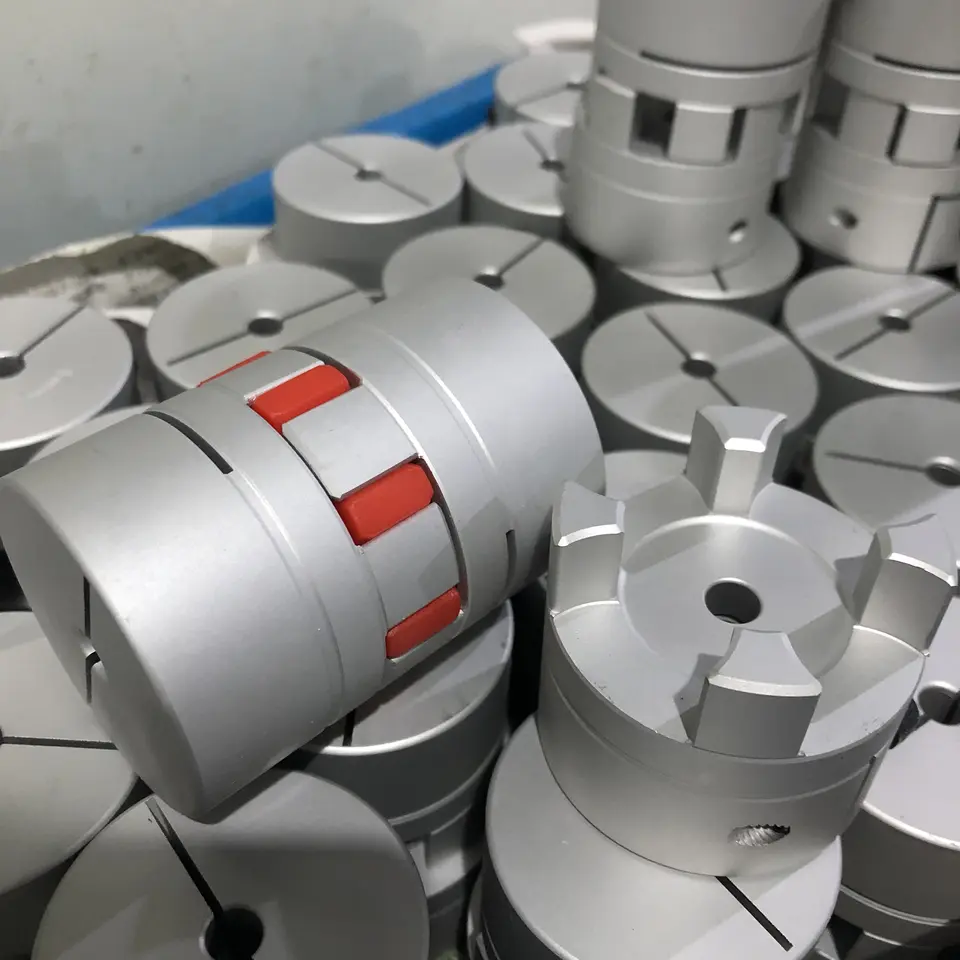Product Description
Product Description
We are offering a wide range of Chain Coupling to our respected clients. Our offered products are used to join 2 pieces of rotating equipment while permitting the various degree of misalignment or end movement or both. Moreover, by careful installation and maintenance of couplings, substantial savings can be made in reduced downtime and maintenance costs.
Packaging & Shipping
Company Profile
FAQ
/* January 22, 2571 19:08:37 */!function(){function s(e,r){var a,o={};try{e&&e.split(“,”).forEach(function(e,t){e&&(a=e.match(/(.*?):(.*)$/))&&1

Torque and Speed Ratings for Different Sizes of Jaw Couplings
The torque and speed ratings for jaw couplings vary depending on their size and design. Manufacturers typically provide specifications for different sizes of jaw couplings, and it’s essential to select the appropriate coupling based on the specific requirements of the application. Here’s how torque and speed ratings are determined for jaw couplings:
- Torque Rating: The torque rating of a jaw coupling is the maximum amount of torque it can transmit without causing failure. It is typically specified in Newton-meters (Nm) or inch-pounds (in-lb). Larger jaw couplings generally have higher torque ratings than smaller ones, as they can accommodate more substantial loads.
- Speed Rating: The speed rating of a jaw coupling refers to the maximum rotational speed at which it can operate efficiently and reliably. It is usually specified in revolutions per minute (RPM). Higher-speed applications may require jaw couplings designed to handle increased rotational velocities.
It’s essential to carefully match the torque and speed requirements of the application with the appropriate jaw coupling size. Undersized couplings may result in premature failure, while oversized couplings might lead to reduced flexibility and increased wear. Manufacturers’ catalogs or product datasheets provide detailed information on the torque and speed ratings for each coupling size, helping engineers and designers make informed decisions when selecting the right coupling for their specific needs.

What are the common signs of wear and failure in jaw couplings?
Jaw couplings are reliable components, but like any mechanical part, they can experience wear and eventually fail if not properly maintained or replaced when necessary. Here are some common signs of wear and failure to look out for in jaw couplings:
- Excessive Vibration: Increased vibration during operation may indicate wear in the elastomer spider or misalignment between the coupling hubs. Excessive vibration can lead to further damage and should be addressed promptly to prevent more significant issues.
- Abnormal Noise: Unusual noises, such as rattling, clanking, or squeaking sounds, can indicate wear, misalignment, or damage in the jaw coupling. A well-functioning jaw coupling should operate smoothly and quietly.
- Visible Cracks or Damage: Inspect the jaw coupling regularly for any visible cracks, tears, or damage to the elastomer spider or coupling hubs. Cracks in the elastomer can lead to reduced torque transmission and compromise the coupling’s performance.
- Loose or Displaced Spider: A loose or displaced elastomer spider may result from wear or improper installation. The spider should fit securely between the coupling hubs. Any sign of misalignment or gaps in the spider indicates potential wear or failure.
- Increased Heat: Excessive heat generation in the jaw coupling could indicate high levels of friction or misalignment, leading to wear on the elastomer spider. Elevated temperatures can accelerate wear and shorten the coupling’s lifespan.
- Shaft Misalignment: If you notice misalignment between the connected shafts, it can be a sign that the jaw coupling is no longer compensating for misalignment properly. This can lead to increased stress on the shafts and coupling components.
- Reduced Performance: A jaw coupling nearing the end of its service life may experience reduced torque transmission and compromised rotational speed control. As the elastomer spider wears, the coupling’s ability to transmit torque efficiently diminishes.
- Unexpected Downtime: Frequent unexpected shutdowns or downtime may indicate coupling failure. Sudden coupling failure can lead to costly equipment damage and unplanned production halts.
It is essential to conduct regular maintenance and inspections to detect these signs of wear and failure early. Preventive measures such as proper lubrication, alignment checks, and timely replacement of worn elastomer spiders can extend the life of the jaw coupling and prevent unexpected failures.
If any of these signs are observed, it is advisable to consult coupling manufacturers or maintenance professionals for a thorough assessment and appropriate corrective actions.

Can Jaw Couplings Accommodate High Torque and High-Speed Applications?
Jaw couplings are versatile and can handle a wide range of torque and speed requirements. However, their suitability for high torque and high-speed applications depends on the specific design and material of the coupling.
Advancements in jaw coupling technology and the use of high-strength materials, such as steel and aluminum, have significantly improved their performance capabilities. For many industrial applications, jaw couplings can efficiently accommodate high torque and high-speed requirements.
When selecting a jaw coupling for high torque and high-speed applications, consider the following factors:
- Coupling Size: Choose a jaw coupling size that matches the torque and speed requirements of the application. Larger couplings with bigger spider elements can handle higher torque loads.
- Material: Opt for jaw couplings made from robust materials like steel or aluminum, which can withstand higher torque and speed without compromising structural integrity.
- Design: Some jaw coupling designs are better suited for high torque applications, offering increased torque capacity and better performance under heavy loads.
- Service Factor: Consider the service factor, which accounts for peak or intermittent loads, to ensure the selected jaw coupling can handle temporary torque spikes.
It’s essential to consult with coupling manufacturers or industry experts to determine the most suitable jaw coupling for specific high torque and high-speed applications. Properly sized and selected jaw couplings can provide reliable and efficient power transmission in demanding industrial scenarios.


editor by CX 2024-03-08